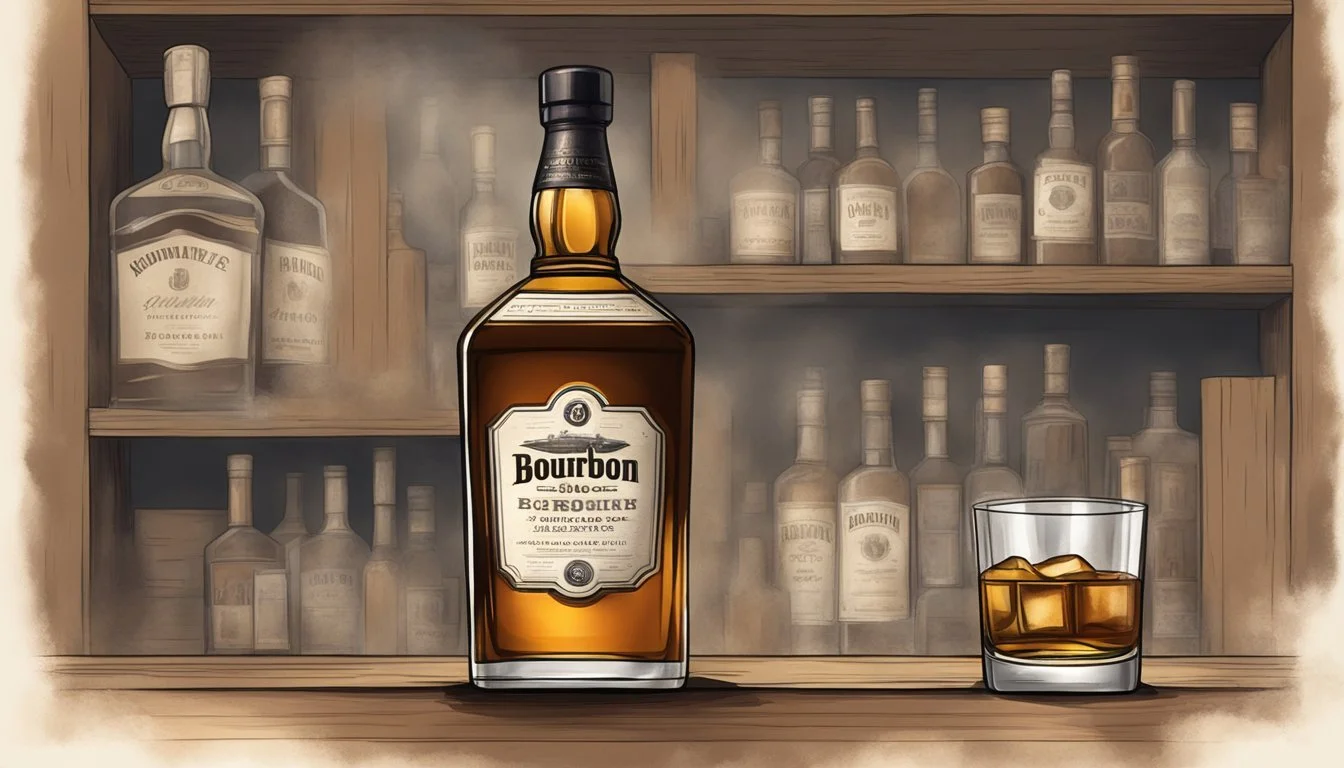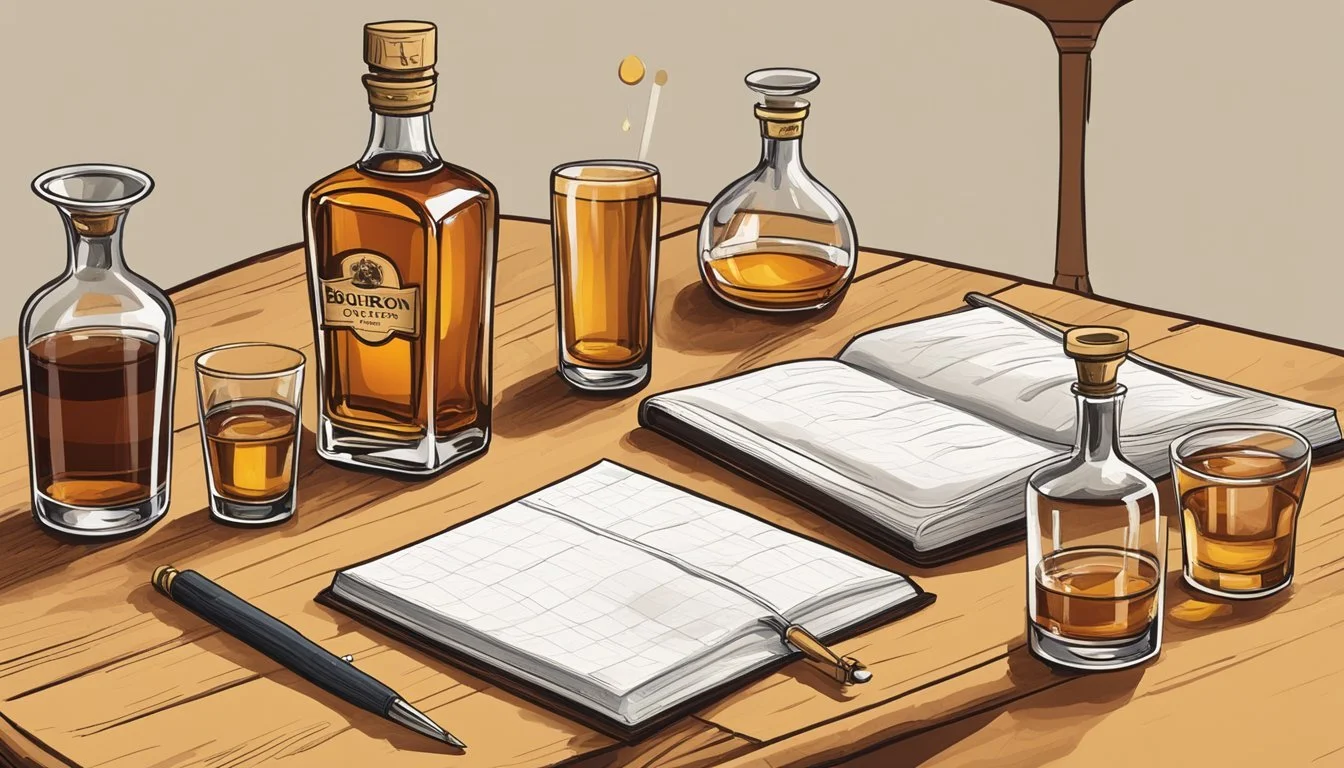Does Bourbon Go Bad?
Understanding Shelf Life and Quality Preservation of Your Whiskey
Bourbon, a type of American whiskey, is renowned for its rich flavor and smooth character, and like many distilled spirits, it boasts an impressive shelf life due to its high alcohol content. This characteristic allows bourbon to act as its own preservative, limiting the growth of bacteria and other spoilage organisms. The longevity of bourbon makes it appealing not only to those who enjoy it casually but also to collectors who may keep it unopened for years.
Once a bottle of bourbon is opened, however, the clock starts ticking on its optimal taste profile. Exposure to air begins a slow oxidation process, which can eventually lead to a change in the flavor of the bourbon. While it doesn't become unsafe to consume, bourbon enthusiasts may notice a decline in the distinct qualities that provide the spirit's complexity and depth. Proper storage—away from light, heat, and with minimal temperature variation—can extend the life of an opened bottle, typically up to six months to two years, without significant changes in taste.
While bourbon does not expire in the traditional sense, the nuance of whether it goes 'bad' depends largely on one's definition of quality. Color and aroma are two indicators savvy bourbon drinkers use to assess the current state of their whiskey. A noticeable fading or alteration might suggest it's past its prime. Thereby, bourbon connoisseurs are usually meticulous about how they store their spirits to preserve their prime characteristics for as long as possible.
Understanding Bourbon
Bourbon, a distinctive type of American whiskey, is renowned for its unique characteristics, aging process, and diverse flavor profiles. These elements contribute to the spirit's complexity and enjoyment.
Bourbon Characteristics
Bourbon's identity is legally defined by strict standards. It must be made from a grain mixture that is at least 51% corn, lending it a sweeter taste. The spirit's rich color, which can range from a light amber to deep caramel, is a direct result of its aging process. Bourbon must also be distilled to no more than 160 proof (80% alcohol by volume), entered into the barrel for aging at no more than 125 proof, and bottled at a minimum of 80 proof.
Aging Process
Aging is essential to bourbon’s flavor development. It must age in new, charred oak barrels, which infuse it with vanillin, tannins, and other compounds, enriching the bourbon with complex flavors and a deep amber hue. The law does not prescribe a minimum aging period for a spirit to be labeled as bourbon, but to be considered "straight" bourbon, it must age for at least two years. However, many distillers opt for longer aging periods to achieve the desired depth and smoothness.
Unique Flavor Profiles
The flavor profile of bourbon is diverse, often described in terms of sweetness, fruitiness, spiciness, and earthiness. These flavors come from its core ingredients, the fermentation process, and the aging in oak barrels. Key flavors include notes of caramel, vanilla, fruit, and oak. The interaction between the bourbon and the oak during aging is responsible for creating its unique and complex taste. No two barrels of bourbon are exactly alike, each offering a different nuance to the bourbon enthusiast.
Shelf Life Fundamentals
The lifespan of bourbon varies significantly between unopened and opened bottles, with factors such as storage conditions and exposure to air playing pivotal roles in preservation.
Unopened vs Opened Bottles
Unopened Bottles:
Seal Intact: Bourbon retains its quality indefinitely.
Storage: Must be in a cool, dark environment.
Opened Bottles:
Exposure to Air: Starts the oxidation process, altering taste over time.
Recommended Duration: Six months to two years for optimal quality.
Factors Impacting Shelf Life
Temperature Fluctuations: Consistent cool temperatures are preferred.
Light Exposure: Minimize to prevent degradation of flavors.
Humidity: Low to moderate levels are best to maintain the seal's effectiveness.
By avoiding exposure to extreme conditions and maintaining a good seal, an unopened bottle of bourbon can stand the test of time, while an opened bottle requires more attentive care to enjoy its flavors for as long as possible.
Proper Storage Practices
Storing bourbon correctly is crucial for maintaining its quality. Adherence to proper storage conditions ensures that the flavors and integrity of the bourbon are preserved over time.
Ideal Conditions
Temperature: Bourbon should be stored at a consistent temperature, ideally between 65-75°F (18-24°C). Fluctuations in temperature can affect the taste and quality of the bourbon.
Light: Bourbon bottles should be kept away from direct sunlight. Sunlight can accelerate aging and alter the flavor profile of the liquid.
Humidity: A moderate humidity level is preferred for bourbon storage. High humidity can lead to mold, whereas low humidity risks drying out the cork.
Position: Always store bourbon bottles in an upright position to prevent the cork from deteriorating due to prolonged contact with the liquid.
Storing Opened Bottles
Once opened, a bourbon bottle needs extra care to retain its flavor. The cork should be tightly secured after each use to limit exposure to air, which can lead to oxidation and deterioration of the spirit.
Protecting Against Spoilage
To prevent spoilage, bottles should be stored in a cool, dark place such as a cabinet or cellar. Proper storage ensures the longevity of the bourbon's taste and quality, protecting the investment in each bottle.
Decay and Spoilage
In this section, we explore how chemical changes over time can affect bourbon and the signs that indicate a bottle may have spoiled.
Chemical Changes Over Time
Chemical reactions play a pivotal role in the lifespan of bourbon. Once a bottle is opened, oxidation begins, where exposure to oxygen can gradually alter the spirit's complex flavor profile. While not immediate, this can lead to deterioration in taste and potency over time. However, bourbon's high alcohol content typically protects it from spoilage, mold, and bacteria growth. Sediment formation is rare but can occur in bourbon that has additional flavoring or additives.
Recognizing Spoiled Bourbon
To discern whether a bourbon has spoiled, connoisseurs should inspect two primary aspects:
Color: A significant fade could indicate spoilage, often due to prolonged light exposure.
Smell: An off or altered aroma is a clear sign of spoilage.
Additionally, any unexpected changes in taste or the presence of sediment should raise concerns about the quality and condition of the bourbon. However, it is essential to note that while these indicators suggest the bourbon may have passed its peak, they typically do not mean it has become unsafe for consumption.
Influence of External Factors
This section examines the crucial external factors affecting bourbon spoilage, including temperature fluctuations, light and oxygen exposure, and the role of container integrity.
Temperature and Environmental Effects
Temperature plays a significant part in the preservation of bourbon whiskey. Bourbon ideally should be stored at a consistent temperature, preferably in a cooler environment between 55-60°F (13-16°C). Fluctuations in temperature can cause the liquid to expand and contract, potentially compromising the seal of the bottle and allowing air to enter, which may lead to spoilage.
The Role of Light and Oxygen
Exposure to light, particularly ultraviolet light, can degrade bourbon's quality over time. It's advisable to store bourbon in a dark place away from direct sunlight to minimize this risk. Oxygen exposure, a process called oxidation, can alter the taste and aroma when a bottle is opened. To mitigate the impact of oxygen, one should minimize air in the bottle by transferring bourbon to a smaller container if the liquid levels drop too low.
Container Impact on Spoilage
The type of closure—whether a cork or screw cap—impacts how well a bottle is sealed and thus its exposure to air. A tight seal is crucial to limit the exposure to oxygen, which can spoil the bourbon. Over time, cork can degrade, especially if it dries out or is defective to begin with, leading to increased air exposure and potential spoilage. Regular checks on the integrity of the cork and proper storage position (keeping the cork moist, but not soaked in bourbon) can help prevent spoilage.
Assessing Bourbon Quality
When assessing bourbon quality, one should examine its aroma and flavor profile, look for signs of quality loss, and use tasting and sensory clues to determine its condition.
Evaluating Aroma and Flavors
A bourbon's aroma is a telling indicator of its quality. An intact and high-quality bourbon should emit a complex, rich scent that denotes its diverse flavor profile, which typically includes notes of vanilla, oak, caramel, and sometimes subtle hints of fruit or spice. If the bourbon gives off a sour or unpleasant smell, this could signal that it has been compromised.
Signs of Quality Loss
Quality in bourbon can degrade due to improper storage conditions such as excessive light, fluctuating temperatures, or prolonged exposure to oxygen. Some indicators of quality loss include:
A faded color, which implies light exposure.
A watered-down taste, which may result from temperature changes or a broken seal.
An unpleasant aroma, pointing to potential oxidation.
Tasting and Sensory Clues
The palate should detect the depth of the bourbon's flavor profile when sampled. A well-preserved bourbon will maintain its desired balance of sweetness, warmth, and bitterness, delivering a smooth finish. If one notices a flat or sour taste, this suggests the bourbon may have lost its quality. Trusting one's senses is paramount when discerning the current state of the bourbon.
Practical Insights and Tips
When handling bourbon, it's important to recognize signs of degradation and understand best storage practices to maintain its quality.
When to Discard Bourbon
Color Change: If bourbon displays a significant change in color, typically a fading, it may have been overly exposed to light, signaling a decrease in quality. Odor Alteration: Should the aroma of bourbon change dramatically or turn unpleasant, it might be an indicator that the bourbon has deteriorated. Taste Test: A taste that deviates noticeably from its original profile can suggest it's time to discard the bourbon.
Utilizing Smaller Containers
Preventing Oxidation: Transferring bourbon to a smaller bottle can minimize oxidation once the original bottle is partially empty. Oxidation changes the flavor over time, and less air in the container reduces this risk.
Preservation: Smaller bottles also mean more frequent opening of only a small quantity, thus preserving the rest of the collection.
FAQs on Bourbon's Longevity
How long does bourbon last?
Unopened: Bourbon can last indefinitely if stored properly.
Opened: Generally maintains quality for 1 to 2 years.Storage Tips:
Temperature: Keep at a consistent room temperature (65-75°F).
Light: Store away from sunlight to prevent rapid aging.
Position: Keep the bottle upright to avoid cork deterioration.
Utilizing these tips can ensure a bourbon lover's collection remains enjoyable for as long as possible.





